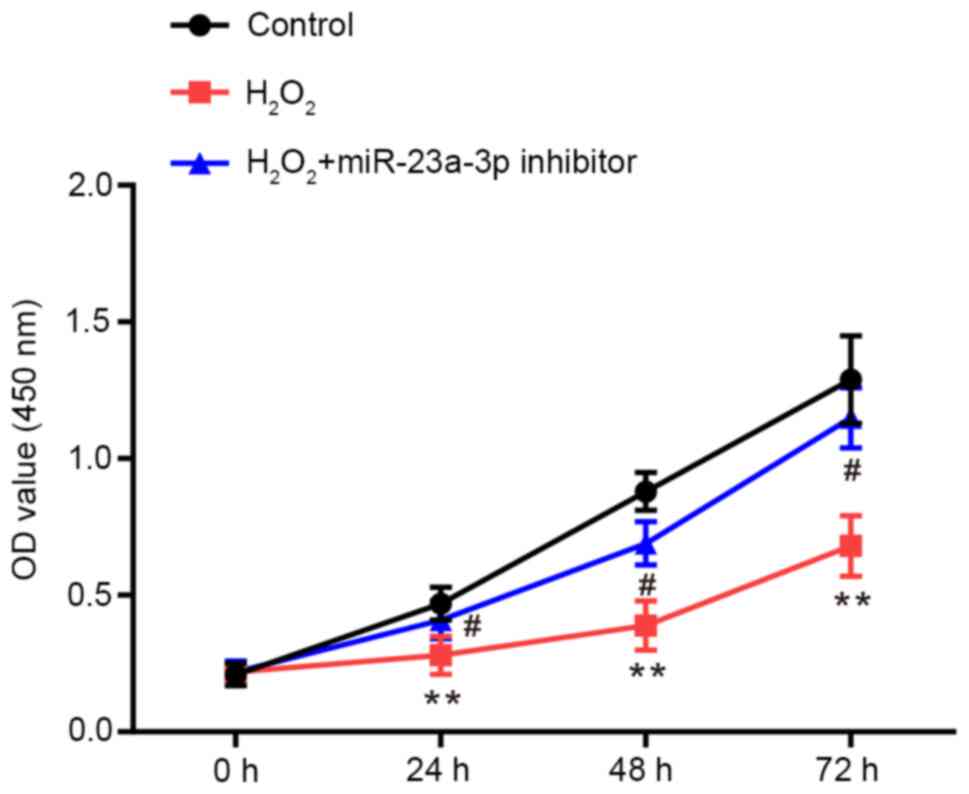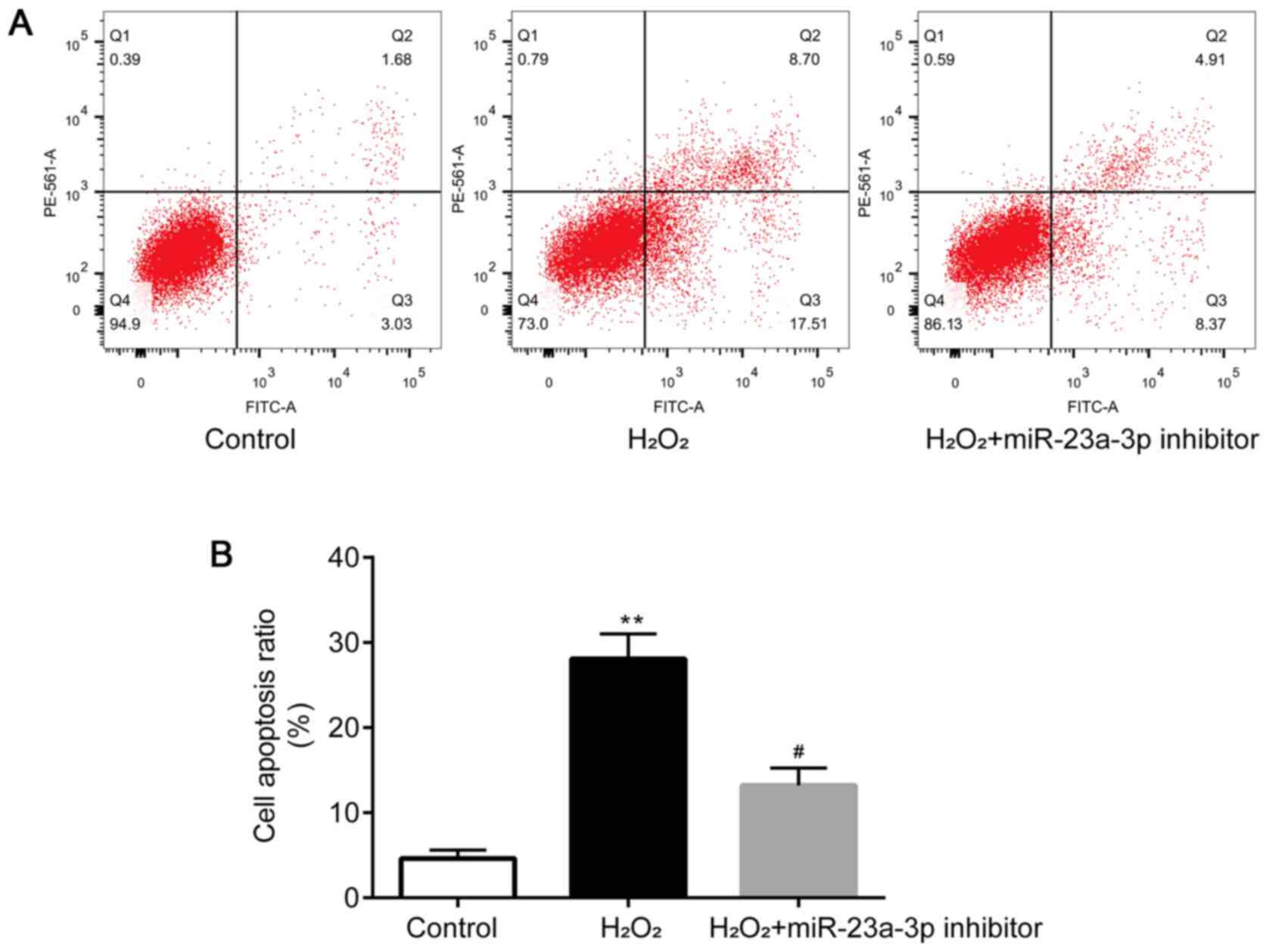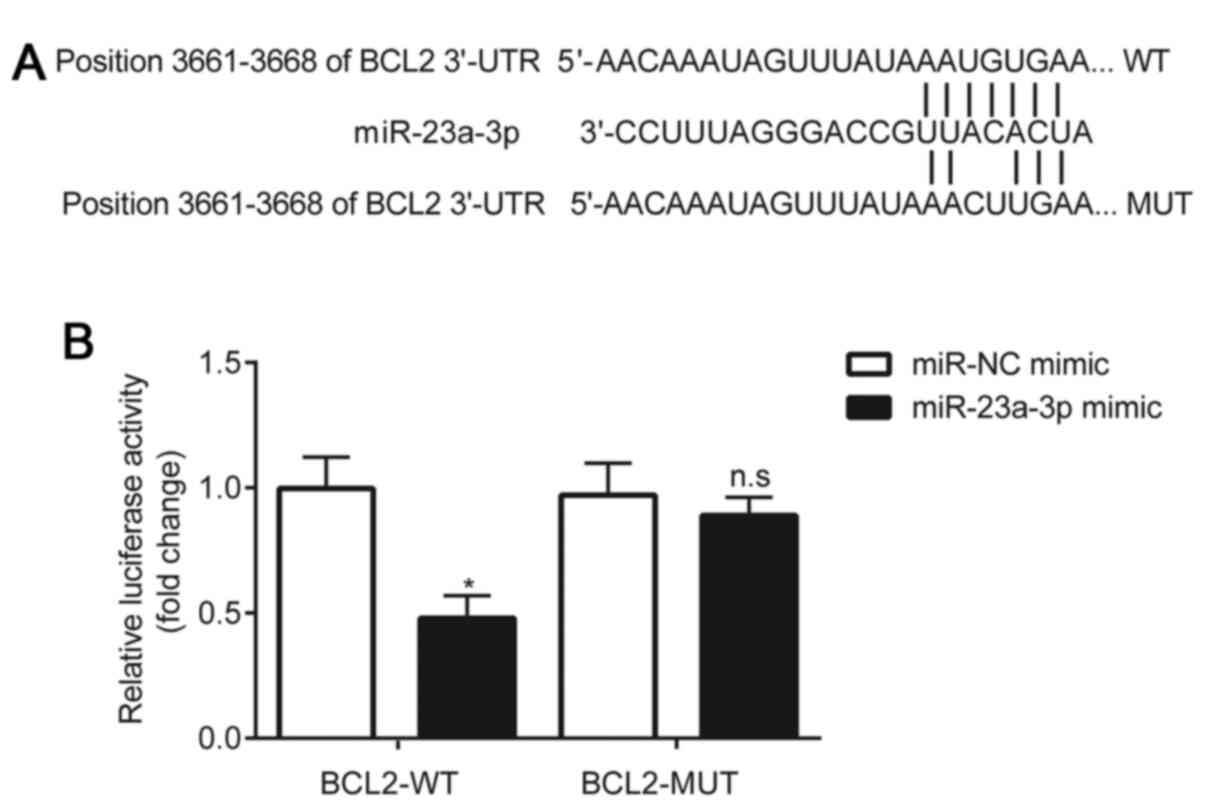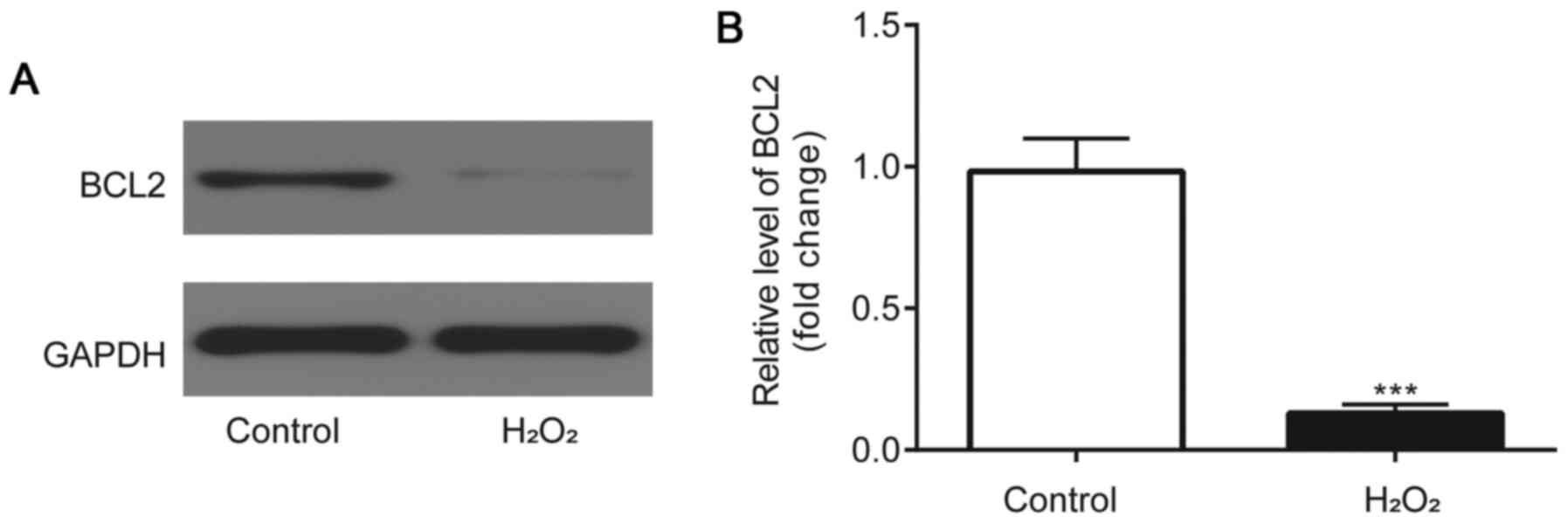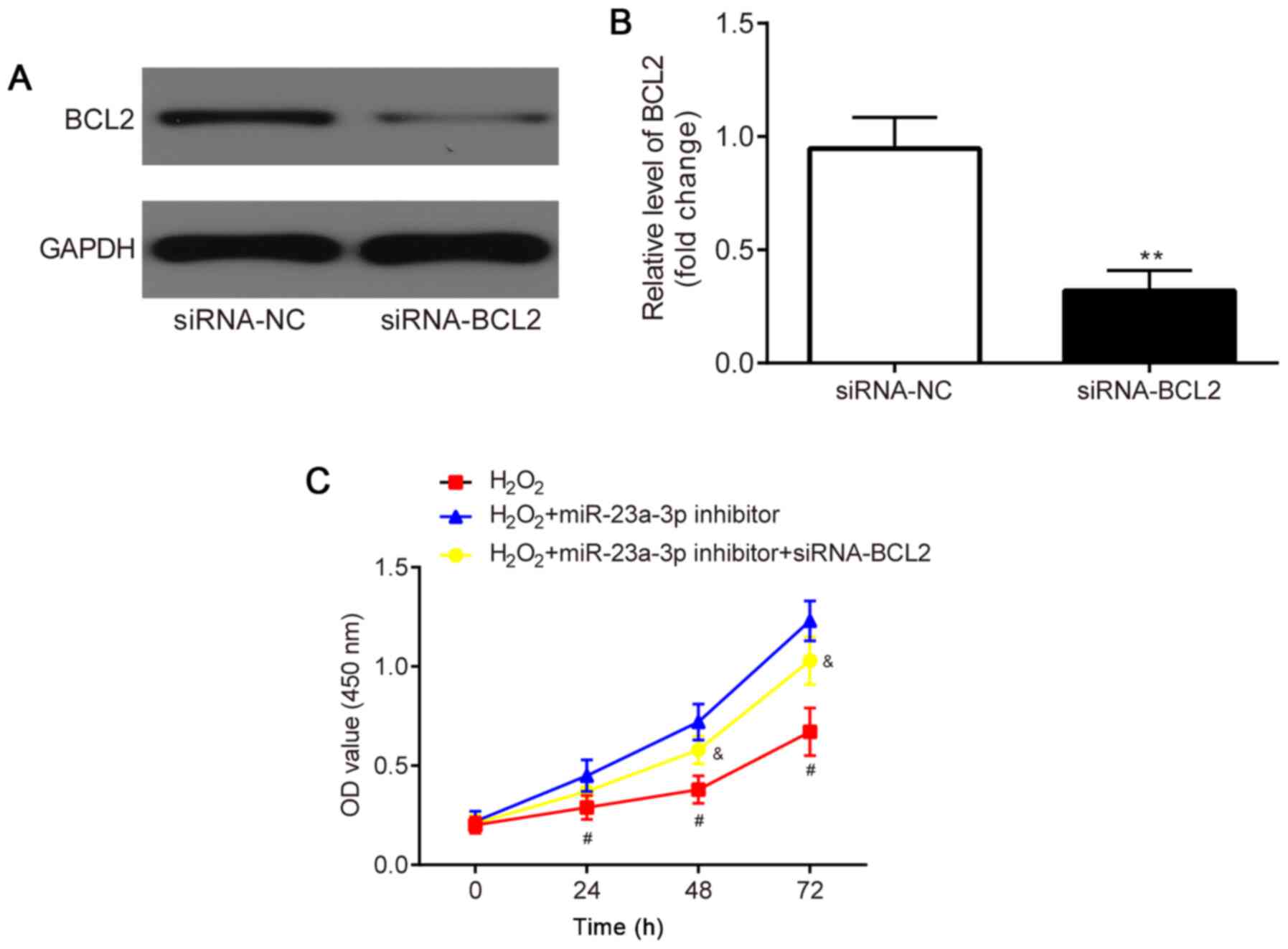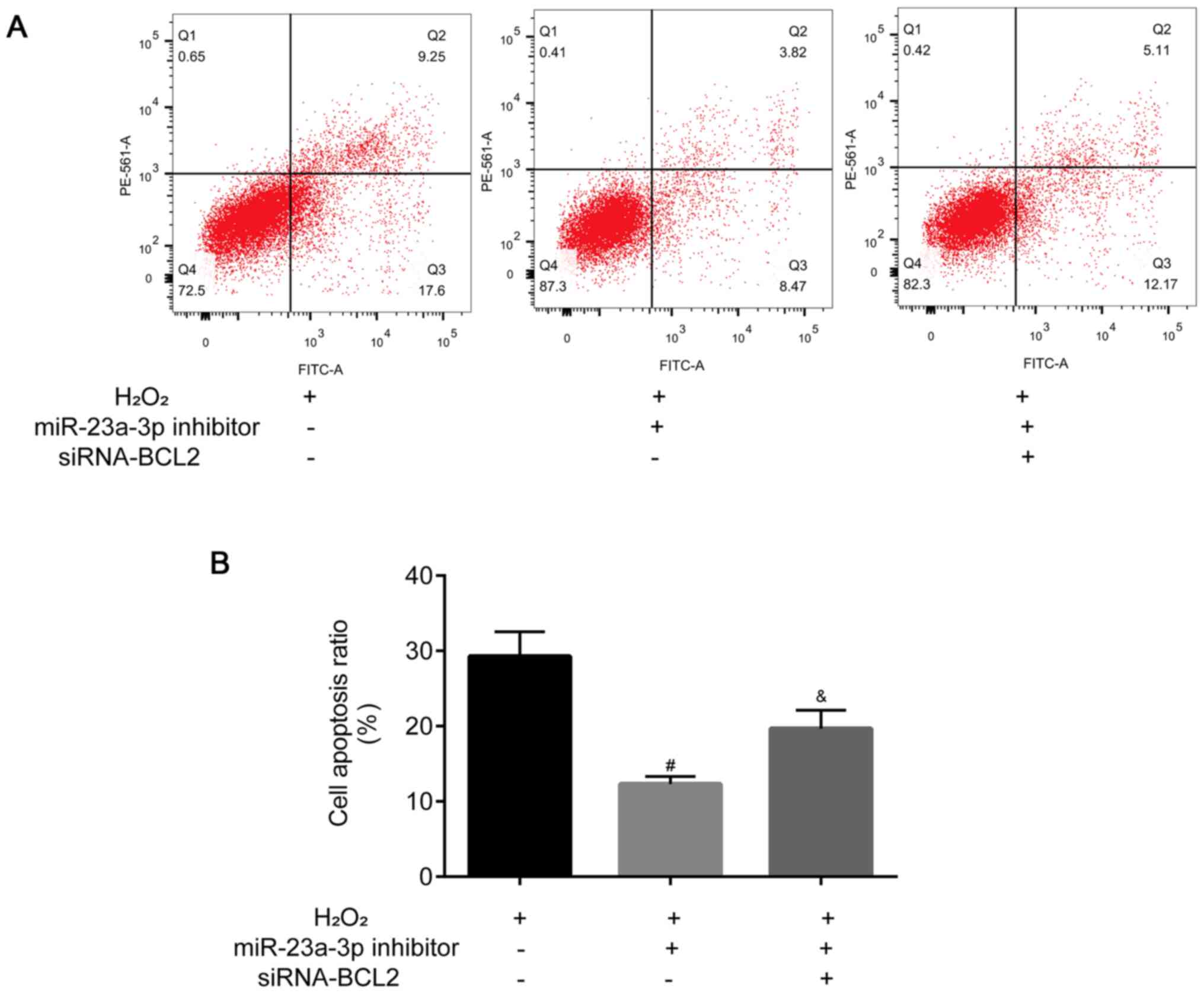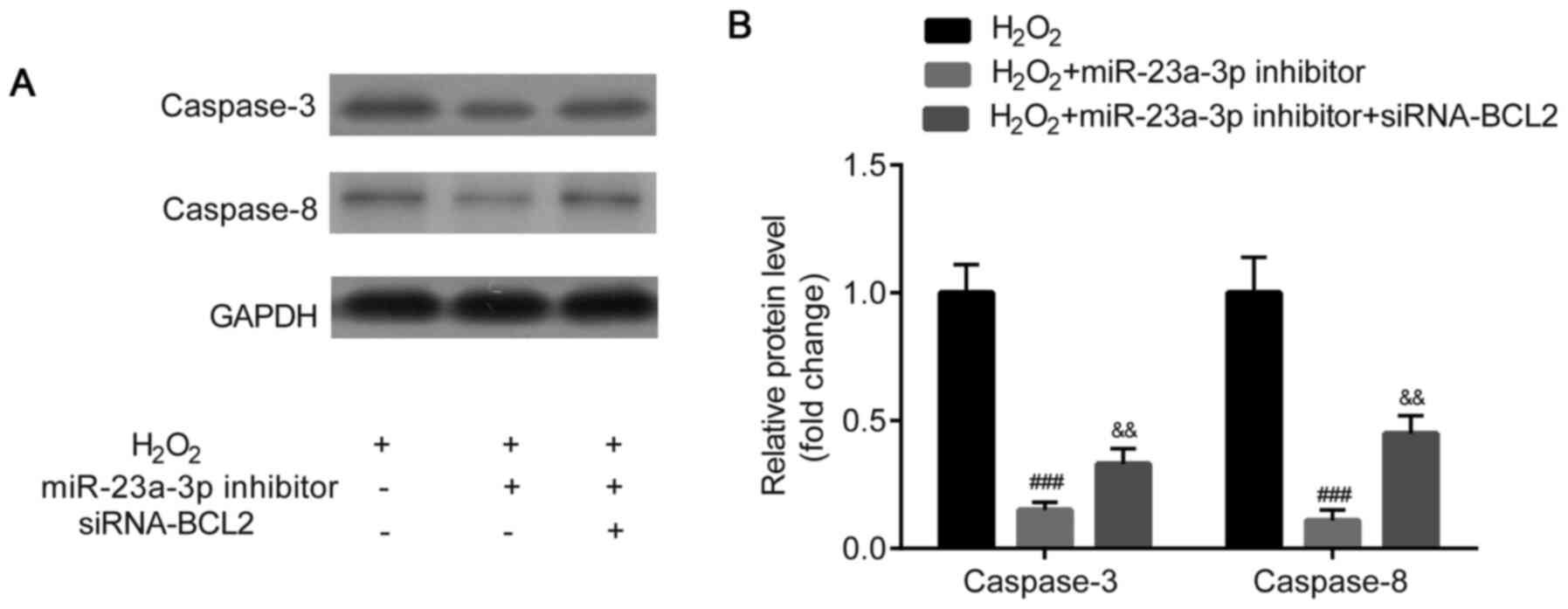|
1
|
Lee CM and Afshari NA: The global state of
cataract blindness. Curr Opin Ophthalmol. 28:98–103.
2017.PubMed/NCBI View Article : Google Scholar
|
|
2
|
Liu YC, Wilkins M, Kim T, Malyugin B and
Mehta JS: Cataracts. Lancet. 390:600–612. 2017.PubMed/NCBI View Article : Google Scholar
|
|
3
|
Khairallah M, Kahloun R, Bourne R, Limburg
H, Flaxman SR, Jonas JB, Keeffe J, Leasher J, Naidoo K, Pesudovs K,
et al: Number of people blind or visually impaired by cataract
worldwide and in world regions, 1990 to 2010. Invest Ophthalmol Vis
Sci. 56:6762–6769. 2015.PubMed/NCBI View Article : Google Scholar
|
|
4
|
Hodge WG, Whitcher JP and Satariano W:
Risk factors for age-related cataracts. Epidemiol Rev. 17:336–346.
1995.PubMed/NCBI View Article : Google Scholar
|
|
5
|
Kempen JH, Sugar EA, Varma R, Dunn JP,
Heinemann MH, Jabs DA, Lyon AT and Lewis RA: Studies of Ocular
Complications of AIDS Research Group. Risk of cataract among
subjects with acquired immune deficiency syndrome free of ocular
opportunistic infections. Ophthalmology. 121:2317–2324.
2014.PubMed/NCBI View Article : Google Scholar
|
|
6
|
Keel S and He M: Risk factors for
age-related cataract. Clin Exp Ophthalmol. 46:327–328.
2018.PubMed/NCBI View Article : Google Scholar
|
|
7
|
Jiang H, Yin Y, Wu CR, Liu Y, Guo F, Li M
and Ma L: Dietary vitamin and carotenoid intake and risk of
age-related cataract. Am J Clin Nutr. 109:43–54. 2019.PubMed/NCBI View Article : Google Scholar
|
|
8
|
Kim B, Kim SY and Chung SK: Changes in
apoptosis factors in lens epithelial cells of cataract patients
with diabetes mellitus. J Cataract Rcfract Surg. 38:1376–1381.
2012.PubMed/NCBI View Article : Google Scholar
|
|
9
|
Yan Q, Liu JP and Li DW: Apoptosis in lens
development and pathology. Differentiation. 74:195–211.
2006.PubMed/NCBI View Article : Google Scholar
|
|
10
|
Li WC, Kuszak JR, Dunn K, Wang RR, Ma W,
Wang GM, Spector A, Leib M, Cotliar AM, Weiss M, et al: Lens
epithelial cell apoptosis appears to be a common cellular basis for
non-congenital cataract development in humans and animals. J Cell
Biol. 130:169–181. 1995.PubMed/NCBI View Article : Google Scholar
|
|
11
|
Kim VN: MicroRNA biogenesis: Coordinated
cropping and dicing. Nat Rev Mol Cell Biol. 6:376–385.
2005.PubMed/NCBI View
Article : Google Scholar
|
|
12
|
Bartel DP: MicroRNAs: Genomics,
biogenesis, mechanism, and function. Cell. 116:281–297.
2004.PubMed/NCBI View Article : Google Scholar
|
|
13
|
Ambros V: The functions of animal
microRNAs. Nature. 431:350–355. 2004.PubMed/NCBI View Article : Google Scholar
|
|
14
|
Gong W, Li J, Wang Y, Meng J and Zheng G:
miR-221 promotes lens epithelial cells apoptosis through
interacting with SIRT1 and E2F3. Chem Biol Interact. 306:39–46.
2019.PubMed/NCBI View Article : Google Scholar
|
|
15
|
Zhou W, Xu J, Wang C, Shi D and Yan Q:
miR-23b-3p regulates apoptosis and autophagy via suppressing SIRT1
in lens epithelial cells. J Cell Biochem. 120:19635–19646.
2019.PubMed/NCBI View Article : Google Scholar
|
|
16
|
Wu C, Lin H, Wang Q, Chen W, Luo H, Chen W
and Zhang H: Discrepant expression of microRNAs in transparent and
cataractous human lenses. Invest Ophthalmol Vis Sci. 53:3906–3912.
2012.PubMed/NCBI View Article : Google Scholar
|
|
17
|
Li Q, Pan H and Liu Q: MicroRNA-15a
modulates lens epithelial cells apoptosis and proliferation through
targeting B-cell lymphoma-2 and E2F transcription factor 3 in
age-related cataracts. Biosci Rep. 39(BSR20191773)2019.PubMed/NCBI View Article : Google Scholar
|
|
18
|
Ren H, Tao H, Gao Q, Shen W, Niu Z, Zhang
J, Mao H, Du A and Li W: miR-326 antagomir delays the progression
of age-related cataract by upregulating FGF1-mediated expression of
betaB2-crystallin. Biochem Biophys Res Commun. 505:505–510.
2018.PubMed/NCBI View Article : Google Scholar
|
|
19
|
Livak KJ and Schmittgen TD: Analysis of
relative gene expression data using real-time quantitative PCR and
the 2(-Delta Delta C(T)) method. Methods. 25:402–408.
2001.PubMed/NCBI View Article : Google Scholar
|
|
20
|
Zhang ZF, Zhang J, Hui YN, Zheng MH, Liu
XP, Kador PF, Wang YS, Yao LB and Zhou J: Up-regulation of NDRG2 in
senescent lens epithelial cells contributes to age-related cataract
in human. PLoS One. 6(e26102)2011.PubMed/NCBI View Article : Google Scholar
|
|
21
|
Dong Y, Zheng Y, Xiao J, Zhu C and Zhao M:
MicroRNA let-7b induces lens epithelial cell apoptosis by targeting
leucine-rich repeat containing G protein-coupled receptor 4 (Lgr4)
in age-related cataract. Exp Eye Res. 147:98–104. 2016.PubMed/NCBI View Article : Google Scholar
|
|
22
|
Liu Y, Li HH and Liu Y: microRNA-378a
regulates the reactive oxygen species (ROS)/Phosphatidylinositol
3-Kinases (PI3K)/AKT signaling pathway in human lens epithelial
cells and cataract. Med Sci Monit. 25:4314–4321. 2019.PubMed/NCBI View Article : Google Scholar
|
|
23
|
Chen X, Xiao W, Chen W, Liu X, Wu M, Bo Q,
Luo Y, Ye S, Cao Y and Liu Y: MicroRNA-26a and -26b inhibit lens
fibrosis and cataract by negatively regulating Jagged-1/Notch
signaling pathway. Cell Death Differ. 24:1431–1442. 2017.PubMed/NCBI View Article : Google Scholar
|
|
24
|
Thomadaki H and Scorilas A: BCL2 family of
apoptosis-related genes: Functions and clinical implications in
cancer. Crit Rev Clin Lab Sci. 43:1–67. 2006.PubMed/NCBI View Article : Google Scholar
|
|
25
|
Vogler M, Walter HS and Dyer MJS:
Targeting anti-apoptotic BCL2 family proteins in haematological
malignancies-from pathogenesis to treatment. Br J Haematol.
178:364–379. 2017.PubMed/NCBI View Article : Google Scholar
|
|
26
|
Frenzel A, Grespi F, Chmelewskij W and
Villunger A: Bcl2 family proteins in carcinogenesis and the
treatment of cancer. Apoptosis. 14:584–596. 2009.PubMed/NCBI View Article : Google Scholar
|
|
27
|
Weng J and Zhang H: The characteristics of
bcl-2 and PCNA expression in the lens epithelium of human being.
Zhonghua Yan Ke Za Zhi. 37:197–199. 2001.PubMed/NCBI(In Chinese).
|
|
28
|
Yu Y, Xing K, Badamas R, Kuszynski CA, Wu
H and Lou MF: Overexpression of thioredoxin-binding protein 2
increases oxidation sensitivity and apoptosis in human lens
epithelial cells. Free Radic Biol Med. 57:92–104. 2013.PubMed/NCBI View Article : Google Scholar
|
|
29
|
Mok JW, Chang DJ and Joo CK: Antiapoptotic
effects of anthocyanin from the seed coat of black soybean against
oxidative damage of human lens epithelial cell induced by
H2O2. Curr Eye Res. 39:1090–1098.
2014.PubMed/NCBI View Article : Google Scholar
|
|
30
|
Kong DQ, Liu Y, Li L and Zheng GY:
Downregulation of Smac attenuates
H2O2-induced apoptosis via endoplasmic
reticulum stress in human lens epithelial cells. Medicine
(Baltimore). 96(e7419)2017.PubMed/NCBI View Article : Google Scholar
|
|
31
|
Feng K and Guo HK: Eaf2 protects human
lens epithelial cells against oxidative stress-induced apoptosis by
Wnt signaling. Mol Med Rep. 17:2795–2802. 2018.PubMed/NCBI View Article : Google Scholar
|
|
32
|
Li QL, Zhang HY, Qin YJ, Meng QL, Yao XL
and Guo HK: MicroRNA-34a promoting apoptosis of human lens
epithelial cells through down-regulation of B-cell lymphoma-2 and
silent information regulator. Int J Ophthalmol. 9:1555–1560.
2016.PubMed/NCBI View Article : Google Scholar
|
|
33
|
Liu SJ, Wang WT, Zhang FL, Yu YH, Yu HJ,
Liang Y, Li N and Li YB: miR-15a-3p affects the proliferation,
migration and apoptosis of lens epithelial cells. Mol Med Rep.
19:1110–1116. 2019.PubMed/NCBI View Article : Google Scholar
|
|
34
|
Ma T, Chen T, Li P, Ye Z, Zhai W, Jia L,
Chen W, Sun A, Huang Y, Wei S and Li Z: Heme oxygenase-1 (HO-1)
protects human lens epithelial cells (SRA01/04) against hydrogen
peroxide (H2O2)-induced oxidative stress and
apoptosis. Exp Eye Res. 146:318–329. 2016.PubMed/NCBI View Article : Google Scholar
|
|
35
|
Sundararajan M, Thomas PA, Teresa PA,
Anbukkarasi M and Geraldine P: Regulatory effect of chrysin on
expression of lenticular calcium transporters, calpains, and
apoptotic-cascade components in selenite-induced cataract. Mol Vis.
22:401–423. 2016.PubMed/NCBI
|
















